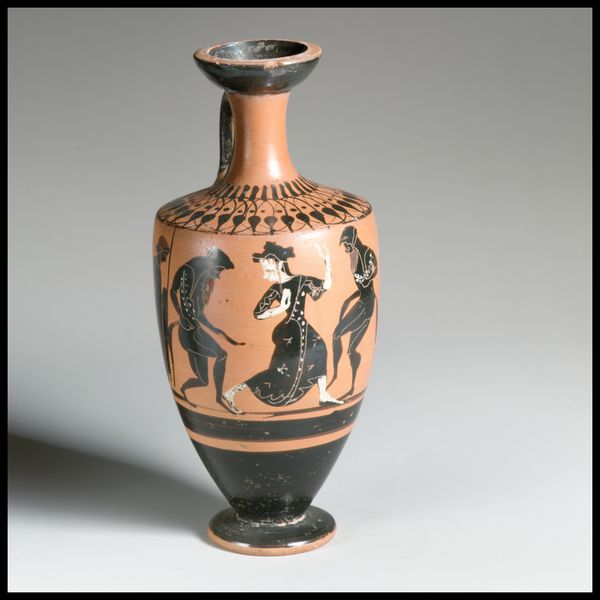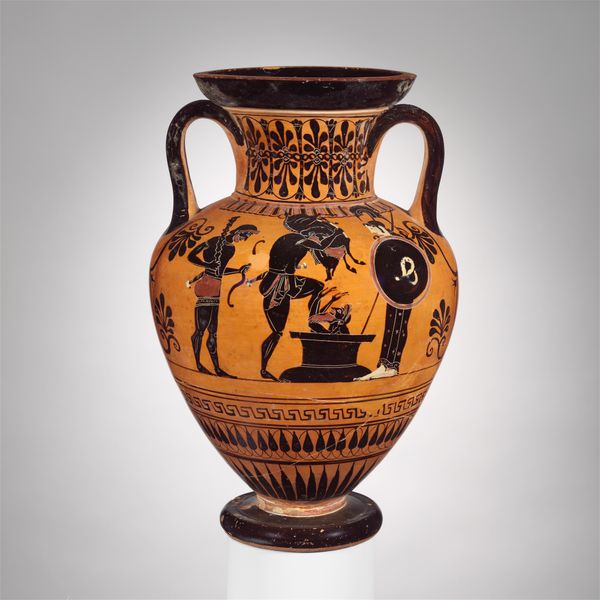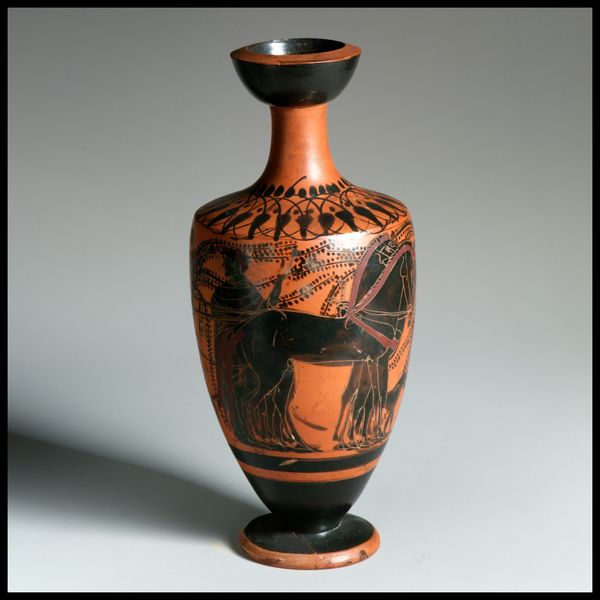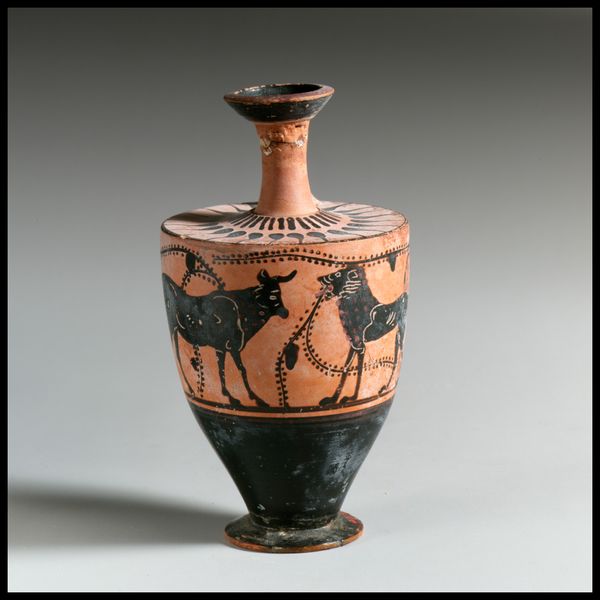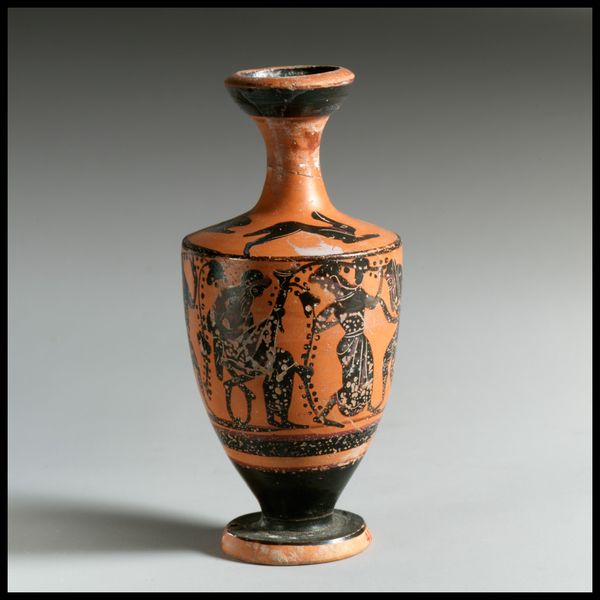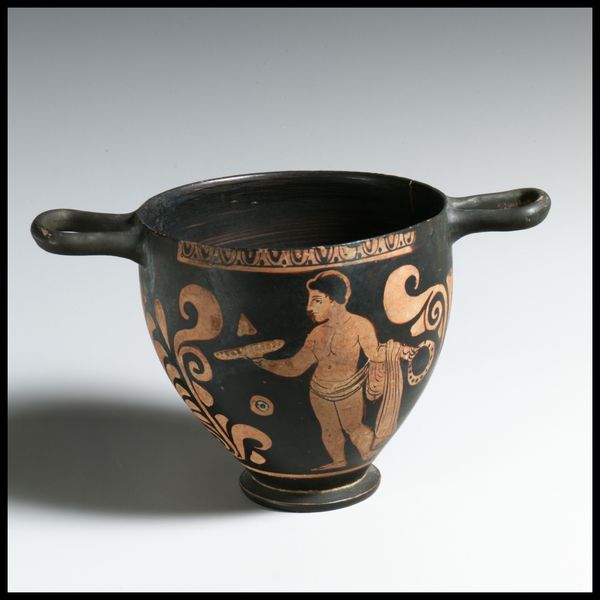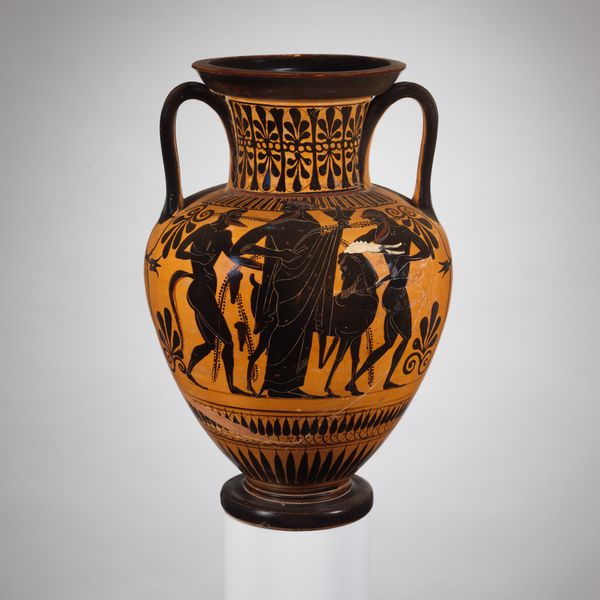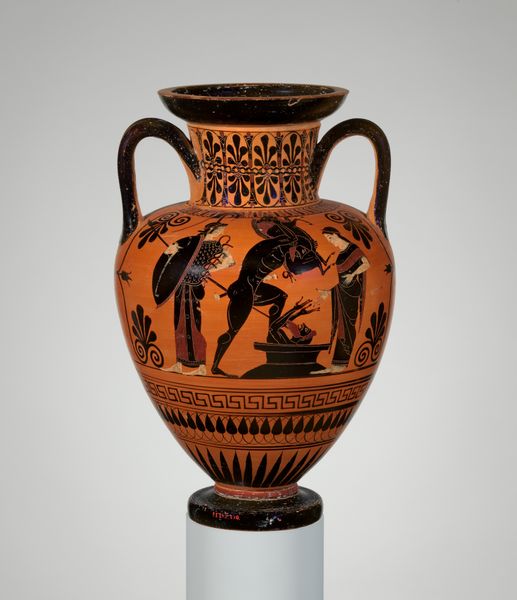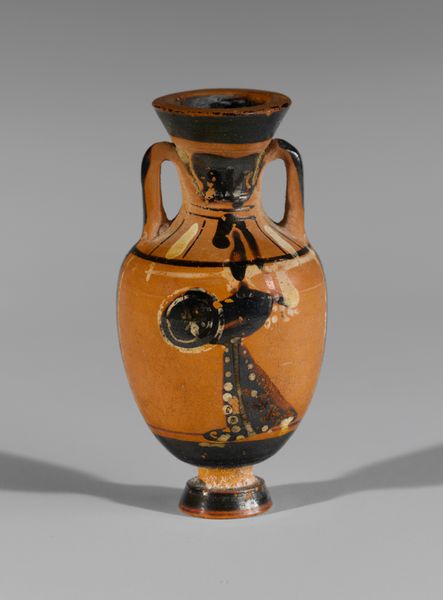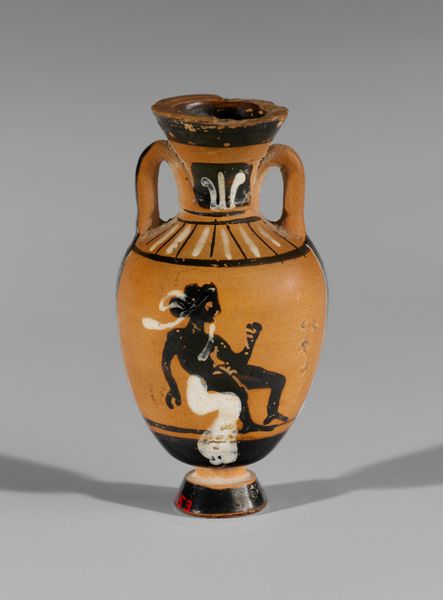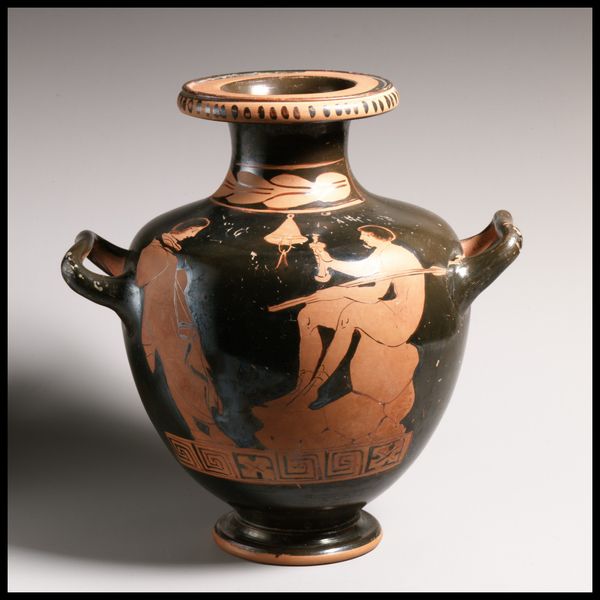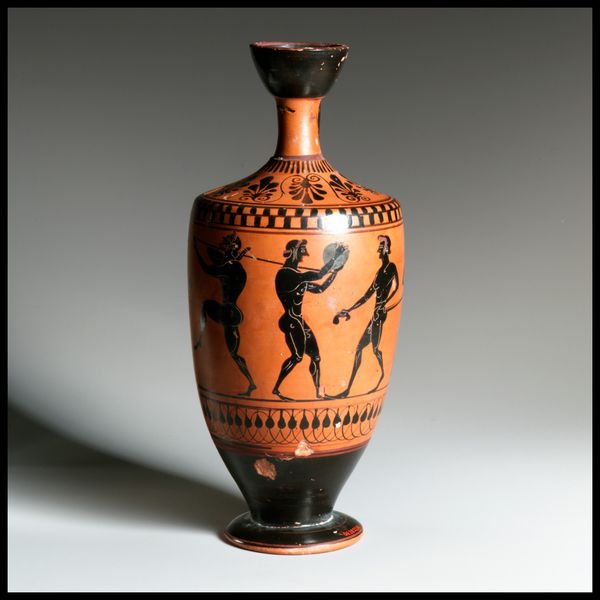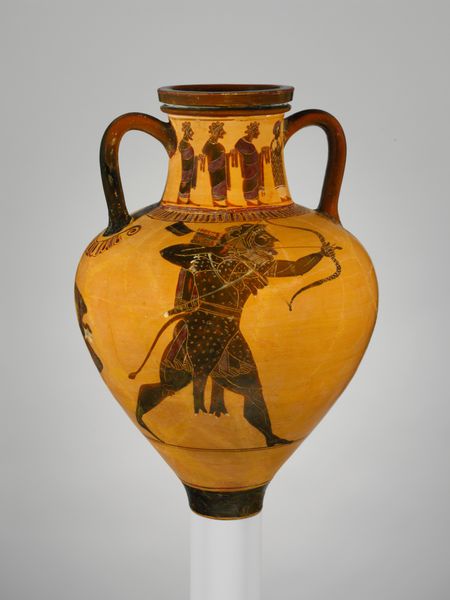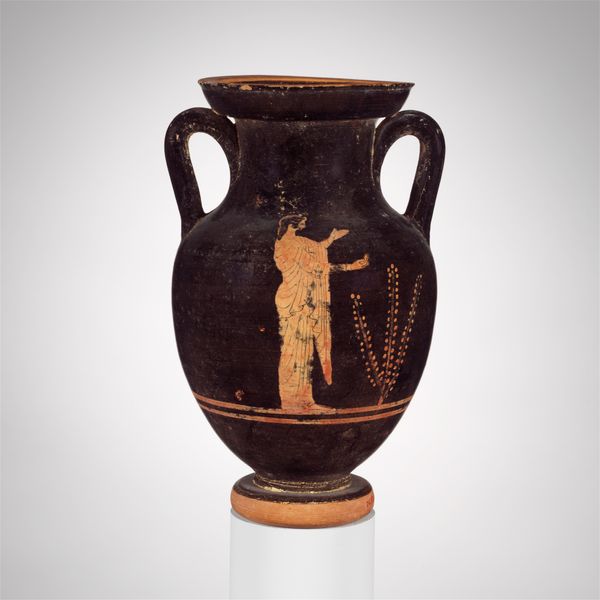
drawing, ceramic, ink, earthenware
#
drawing
#
narrative-art
#
greek-and-roman-art
#
ceramic
#
vase
#
figuration
#
roman-art
#
ink
#
earthenware
#
ancient-mediterranean
#
ceramic
#
earthenware
Dimensions: Diameter: 6 7/8 × 5 1/2 × 4 1/16 in. (17.5 × 14 × 10.3 cm) Height: 12 1/4 in. (31.1 cm)
Copyright: Public Domain
Editor: Here we have a neck-amphora from 500 BC, currently held at the Metropolitan Museum of Art. Looking at its form and these very clear narrative scenes painted on it, I'm struck by how immediate and utilitarian it seems. How do we understand the purpose of such objects within their social context? Curator: Well, consider the materials: earthenware, a common clay, shaped with remarkable skill. This wasn't just a decorative object; it was for holding and transporting goods – probably wine or oil. The painted scenes, applied with ink drawings, aren't separate from this purpose; they reflect the values and narratives circulating within that society. Editor: So, the artistry is intertwined with its function. Does the depiction of what looks like a warrior and an elder also point towards specific aspects of life back then? Curator: Precisely. The production and the narratives on this vase reinforce societal power structures. Who commissioned it? Who benefitted from its contents and the stories depicted? Was it a symbol of wealth? A container that reinforced hierarchical roles? Editor: So it is the equivalent of branding for ancient greek wine? I wonder how accessible these vases would have been? Was this for the elite or were these widespread goods? Curator: Yes and no. It might function similarly to modern branding, establishing status. Yet, widespread production methods also challenge notions of it being *purely* elite. Think of the labor involved: from extracting clay to painting. The accessibility reflects complex dynamics in their society, connecting to larger patterns of trade and labor division. We must ask: Who are the consumers in this scenario, and what relationships of dependency exist in both making, selling, and using these objects. Editor: That really broadens my perspective! I was so focused on the visual narrative, I completely missed how deeply rooted it is in the economics of its time. Curator: Absolutely! It is critical to remember the stories, values, resources, labor that all go into something seemingly simple, that is often lost in simply praising an image on its surface. The object itself and how people relate to it contains it’s meaning and value.
Comments
No comments
Be the first to comment and join the conversation on the ultimate creative platform.
